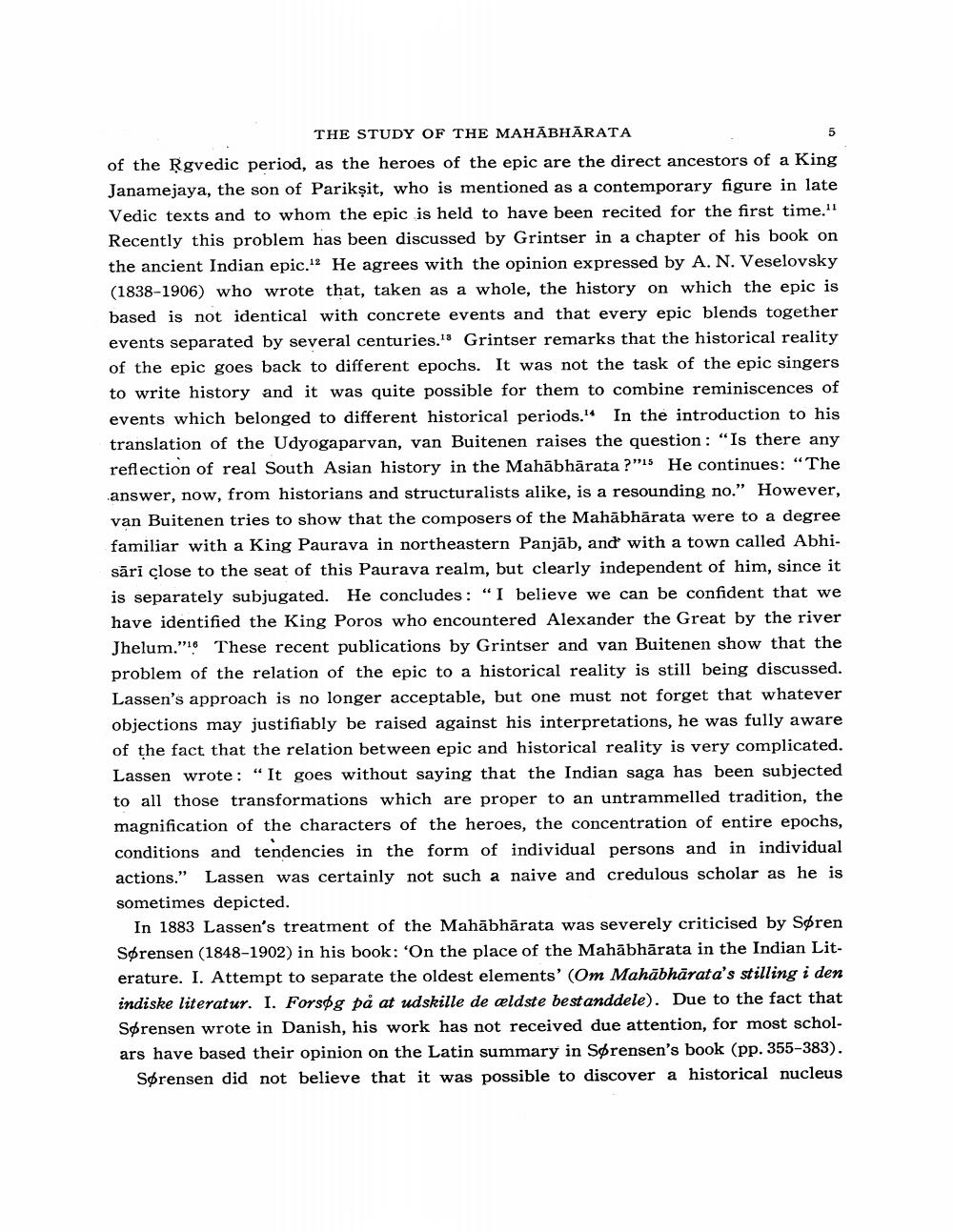Book Title: Study Of Mahabharata Author(s): J W De Jong Publisher: J W De Jong View full book textPage 5
________________ THE STUDY OF THE MAHABHARATA of the Ṛgvedic period, as the heroes of the epic are the direct ancestors of a King Janamejaya, the son of Parikṣit, who is mentioned as a contemporary figure in late Vedic texts and to whom the epic is held to have been recited for the first time."1 Recently this problem has been discussed by Grintser in a chapter of his book on the ancient Indian epic.12 He agrees with the opinion expressed by A. N. Veselovsky (1838-1906) who wrote that, taken as a whole, the history on which the epic is based is not identical with concrete events and that every epic blends together events separated by several centuries. Grintser remarks that the historical reality of the epic goes back to different epochs. It was not the task of the epic singers to write history and it was quite possible for them to combine reminiscences of events which belonged to different historical periods.14 In the introduction to his translation of the Udyogaparvan, van Buitenen raises the question: "Is there any reflection of real South Asian history in the Mahabharata ?" He continues: "The answer, now, from historians and structuralists alike, is a resounding no." However, van Buitenen tries to show that the composers of the Mahabharata were to a degree familiar with a King Paurava in northeastern Panjab, and with a town called Abhisări close to the seat of this Paurava realm, but clearly independent of him, since it is separately subjugated. He concludes: "I believe we can be confident that we have identified the King Poros who encountered Alexander the Great by the river Jhelum." These recent publications by Grintser and van Buitenen show that the problem of the relation of the epic to a historical reality is still being discussed. Lassen's approach is no longer acceptable, but one must not forget that whatever objections may justifiably be raised against his interpretations, he was fully aware of the fact that the relation between epic and historical reality is very complicated. Lassen wrote: "It goes without saying that the Indian saga has been subjected to all those transformations which are proper to an untrammelled tradition, the magnification of the characters of the heroes, the concentration of entire epochs, conditions and tendencies in the form of individual persons and in individual actions." Lassen was certainly not such a naive and credulous scholar as he is sometimes depicted. In 1883 Lassen's treatment of the Mahabharata was severely criticised by Søren Sørensen (1848-1902) in his book: 'On the place of the Mahabharata in the Indian Literature. I. Attempt to separate the oldest elements' (Om Mahabharata's stilling i den indiske literatur. I. Forsøg på at udskille de ældste bestanddele). Due to the fact that Sørensen wrote in Danish, his work has not received due attention, for most scholars have based their opinion on the Latin summary in Sørensen's book (pp. 355-383). Sørensen did not believe that it was possible to discover a historical nucleusPage Navigation
1 ... 3 4 5 6 7 8 9 10 11 12 13 14 15 16 17 18 19
